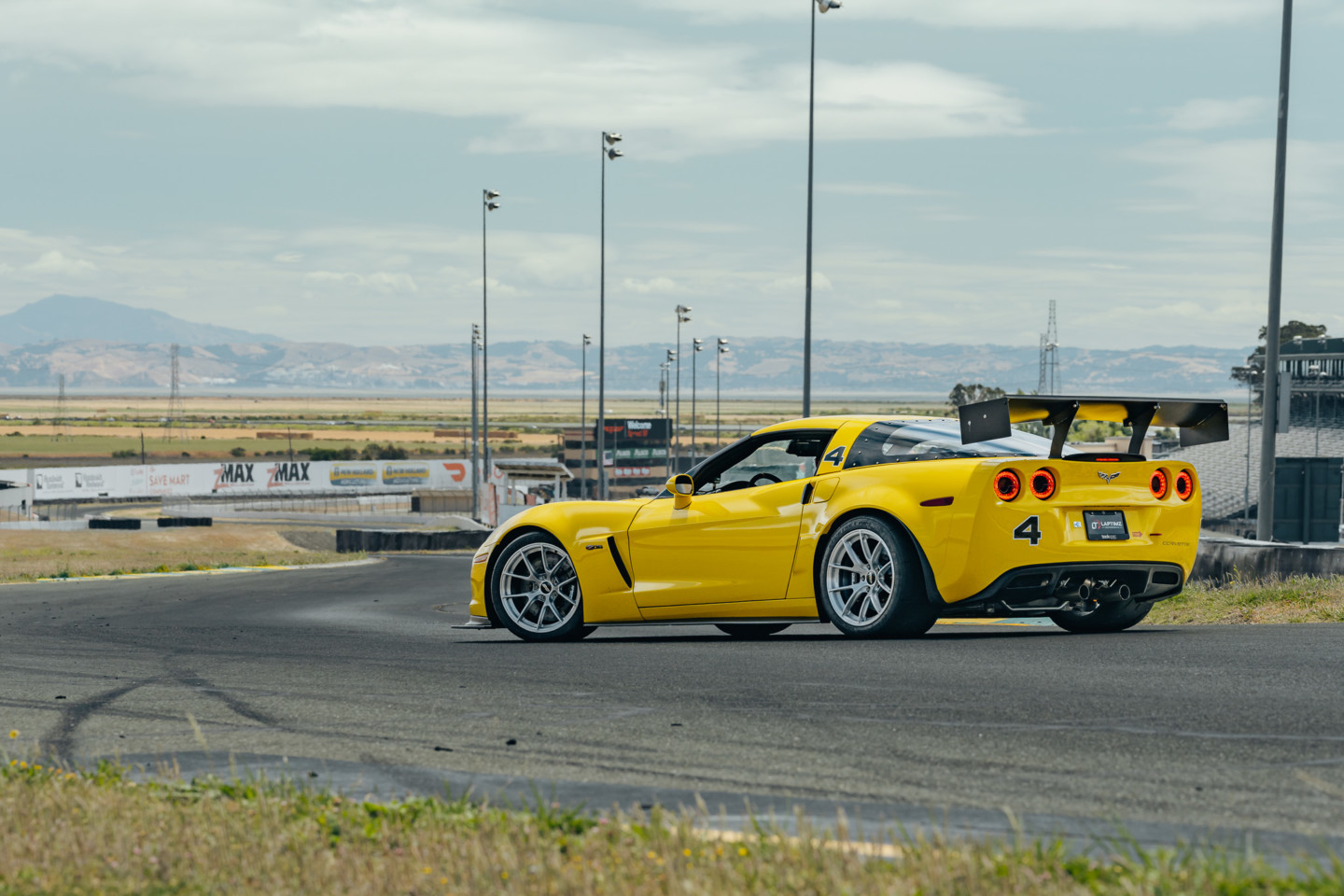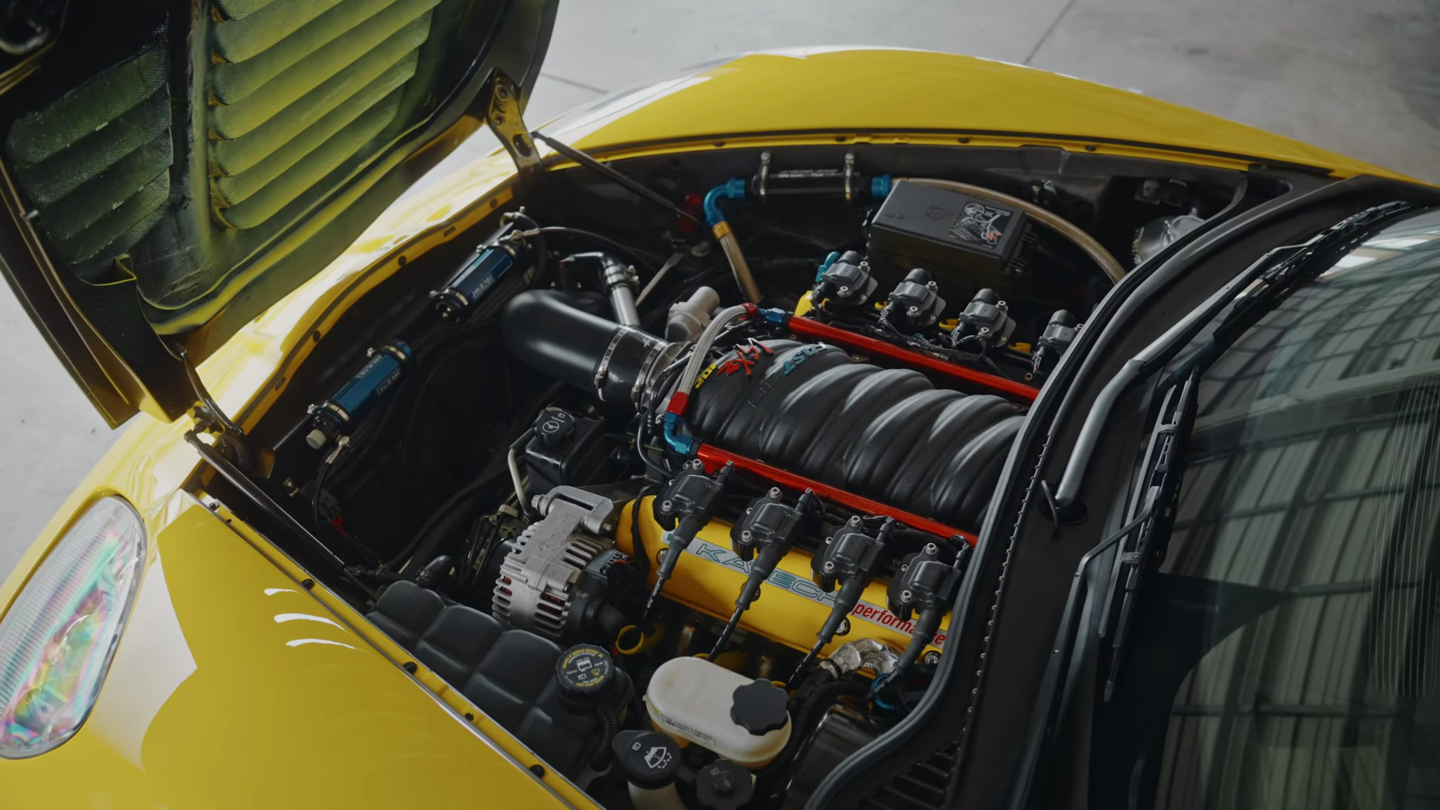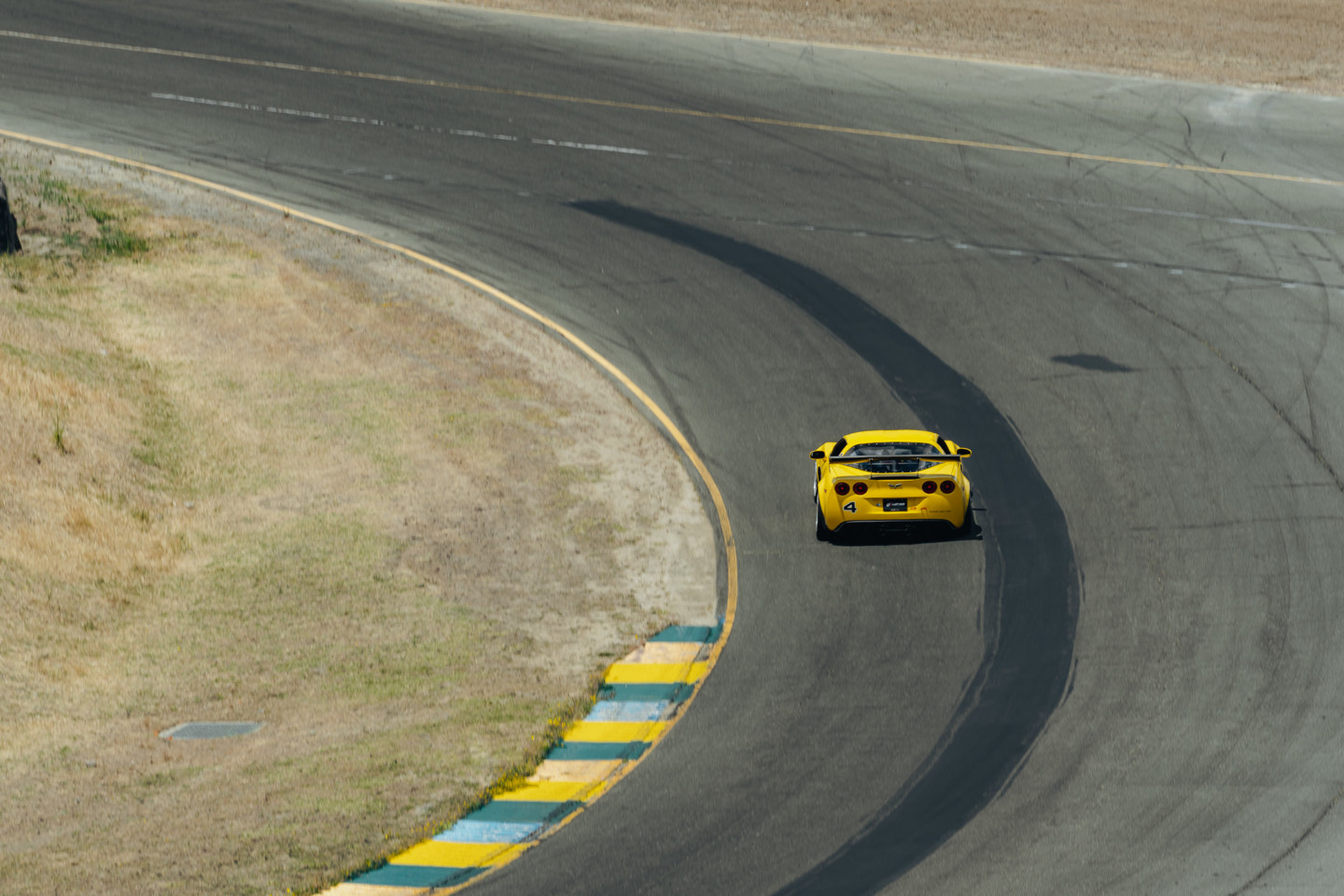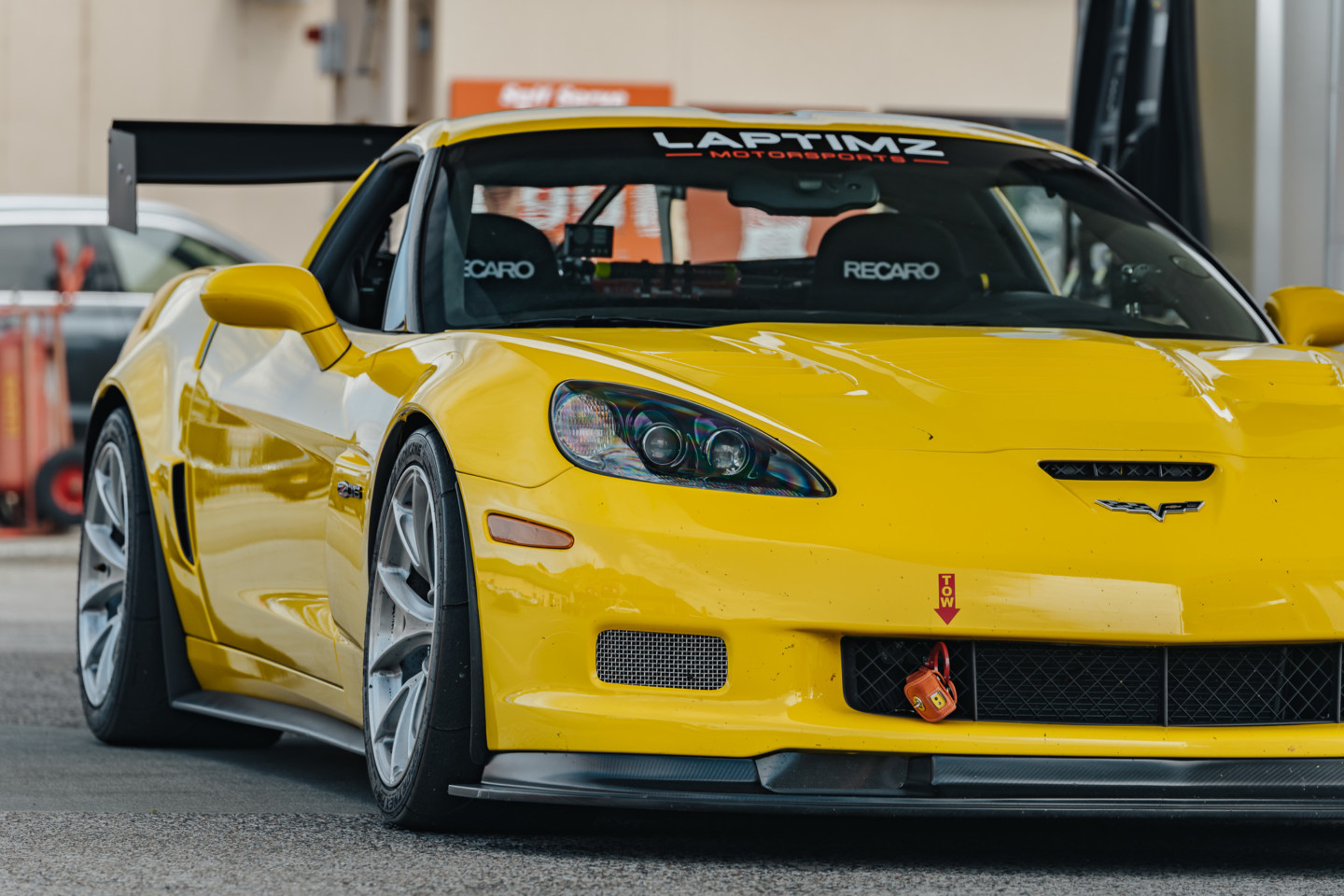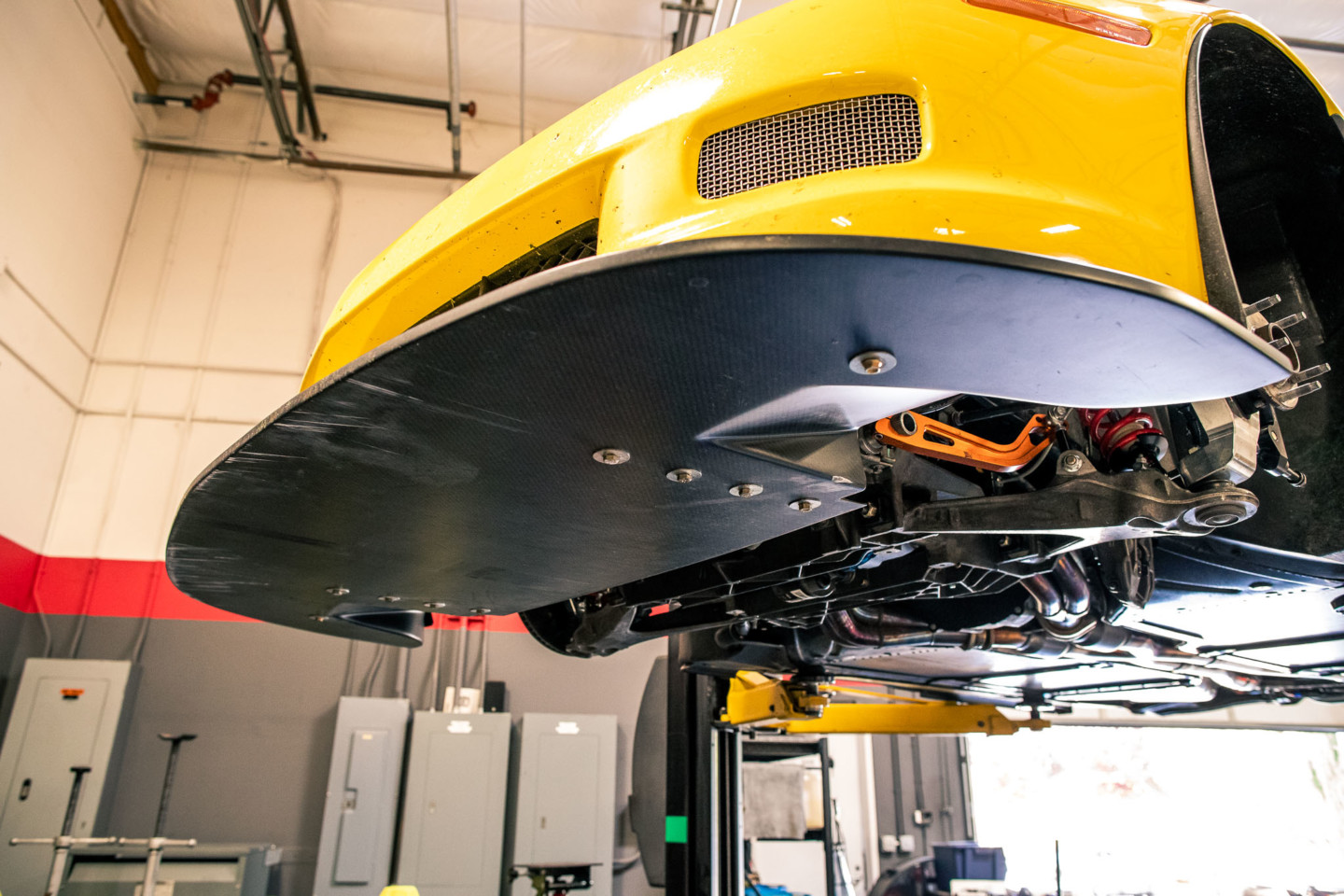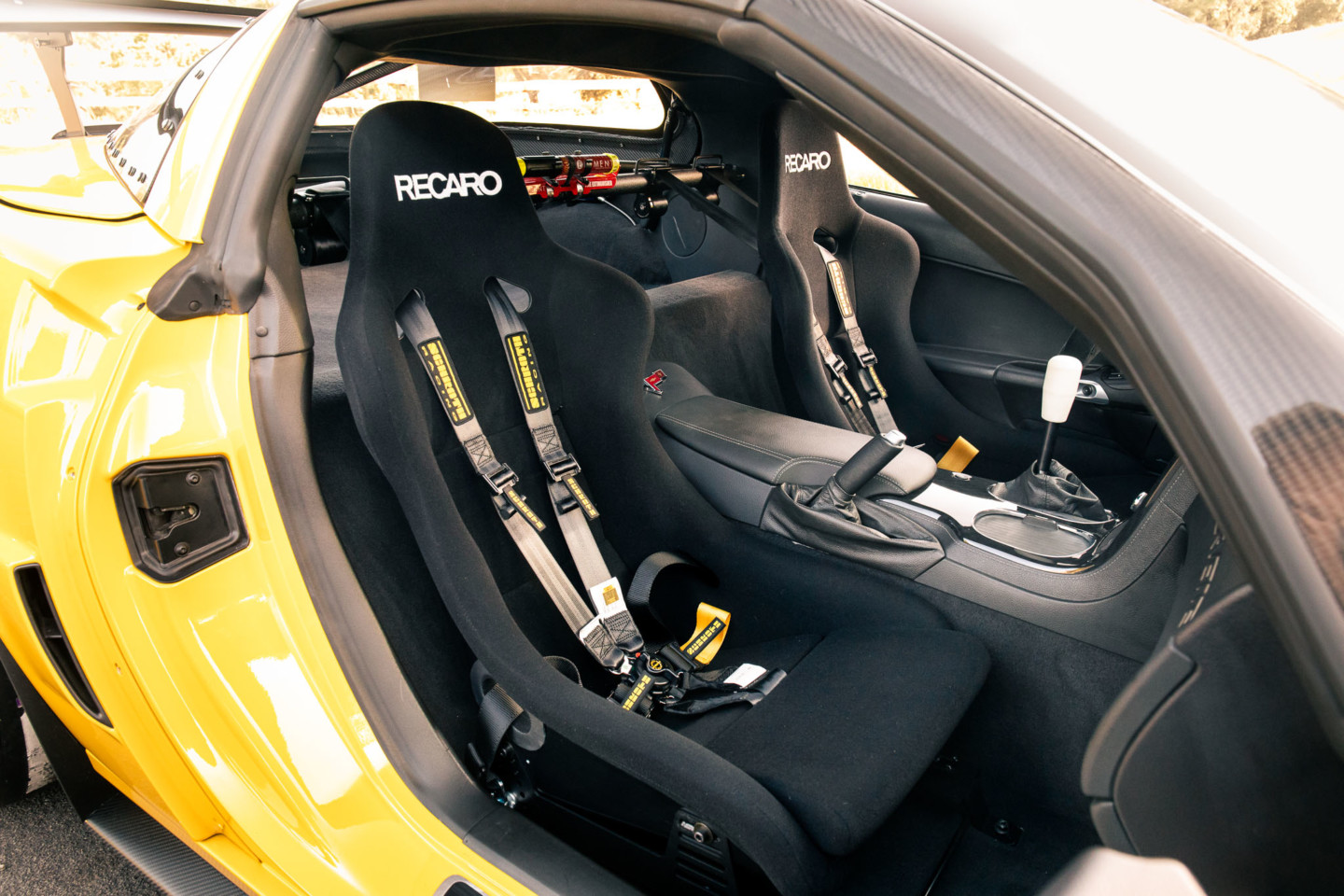A few seconds into any of the onboard videos Matt Paige has filmed inside his C6 Z06, it’s clear the man knows how to build a Corvette for the track. It never steps out under braking. It puts its power down well, it usually goes wherever he points it, and the speeds are tremendous. In fact, if he weren’t traveling so quickly, it would look like he’s out on a Sunday drive.
Photo credit: APEX Staff Photographer: @victorgiang
Predictably, this isn’t his first Corvette. Through decades spent tuning and tracking these cars and building a track support business, he’s acquired an intimate understanding of the C5, C6, and C7 generations. With this particular Z06, he committed to two goals before laying a wrench on it: discovering just how well the car could handle the obligations of a street car and a track machine, as well as creating an encouraging, reliable, and stylish track car which anyone could drive. If all went to plan, this car would showcase what his shop Laptimz Motorsports, is capable of.
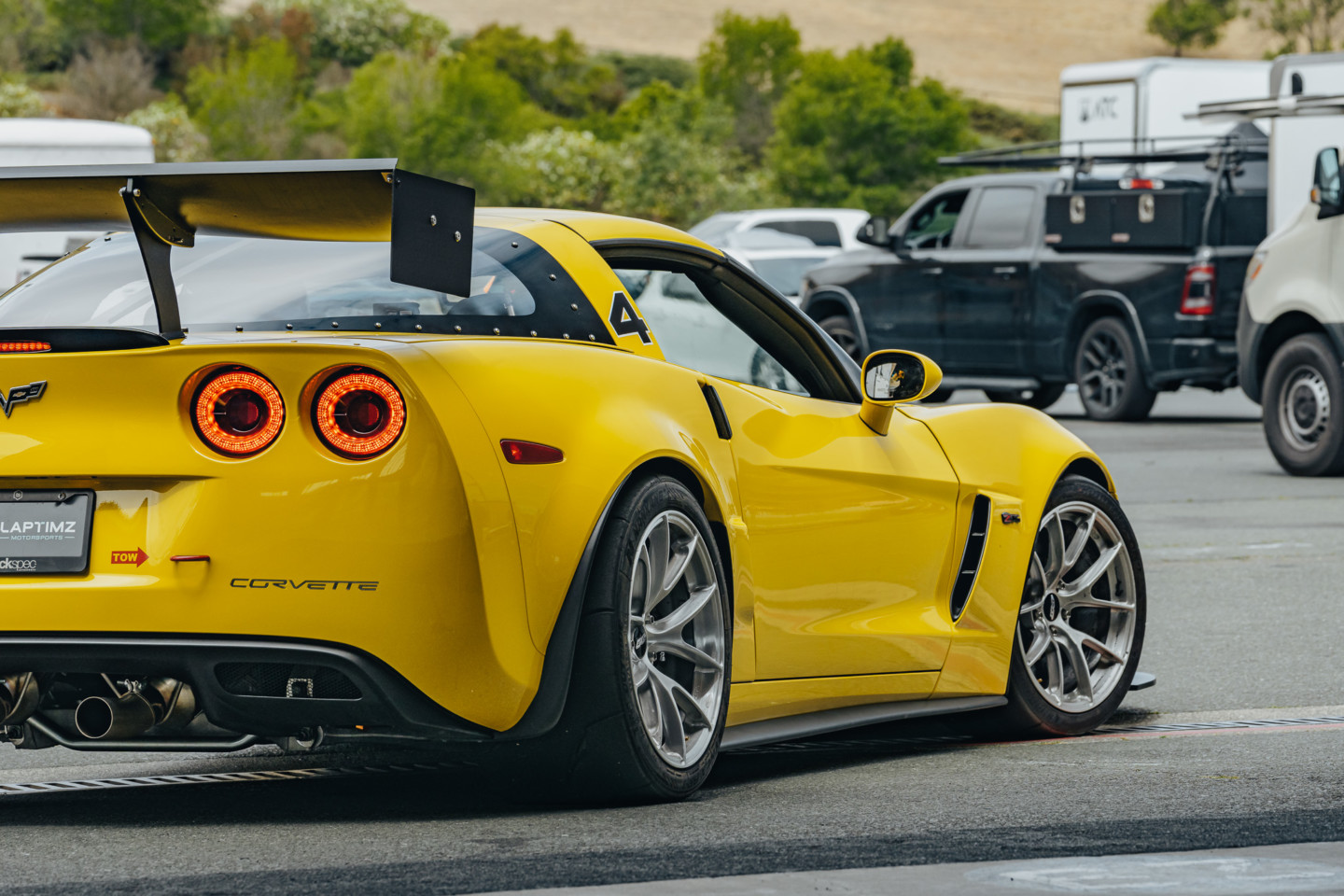
“This is arguably the easiest-to-drive car we’ve ever built since we didn’t overdo any one thing,” Matt says.
Many cars claim to be dual-purpose machines, but few indeed are. Those that are versatile don’t come cheap, and Matt’s happy to admit he’s spent a pretty penny making sure this Corvette has all bases covered. Taking the blank checkbook approach to building this car, it only made sense to buy a mint example to start with. “I wanted a fresh car because I didn’t want to deal with untangling many potentially pre-existing problems. I like the peace of mind that buying a clean car gives you.”
Trade-Offs Made, Peace Gained
Still, a self-described neurotic, Matt had a few items to fret over. It’s well known that the LS7 engine has a habit of dropping valves. Even though this particular Z06 was one of the special Katech-prepared cars—#43 for those interested—the valvetrain issues had not been addressed as they weren’t a common issue in 2009.
For that last little slice of serenity, Matt sent the heads off to American Heritage for a complete rebuild, which meant returning the heads to stock porting parameters. Along with upgraded valves, Katech provided their basic Stage II Track Package, which includes a Torquer cam, a C5R timing chain, and other simple mechanical upgrades.
With the heads back on, he found the engine was making about 50 horsepower shy of what the popular recipe of an LS7, heads, intake, and a cam ought to make. Chalk that up to restrictions of safer heads. However, he noticed his oil and water temps dropped to the low-200s after making these changes. As reliability trumps outright power with this build, he was pretty content with the 525 horsepower and 520 lb-ft this mildly restricted engine makes.
As his company caters to ambitious track day drivers striving to better themselves, the idea of building a one-lap special was of no interest to him. “Power is sexy, but having the car stay cool throughout an entire track day in the middle of August is sexier,” he declares.
Fill These Shoes
Being a bigger car (3,000 pounds), the C6 Z06 requires a special set of stoppers for consistent braking performance. A set of AP Racing big brakes went in place of the original binders. Thankfully, the design of the brakes is so good that ducting isn’t necessary. “The AP brakes are internally vaned, two-piece aluminum rotors that, in my experience, never overheat,” Matt states. They happen to be significantly lighter than the factory brakes, too, despite their size. Six-piston calipers fit around 372mm rotors up front, and four-piston brakes are paired with 340mm rotors out back.
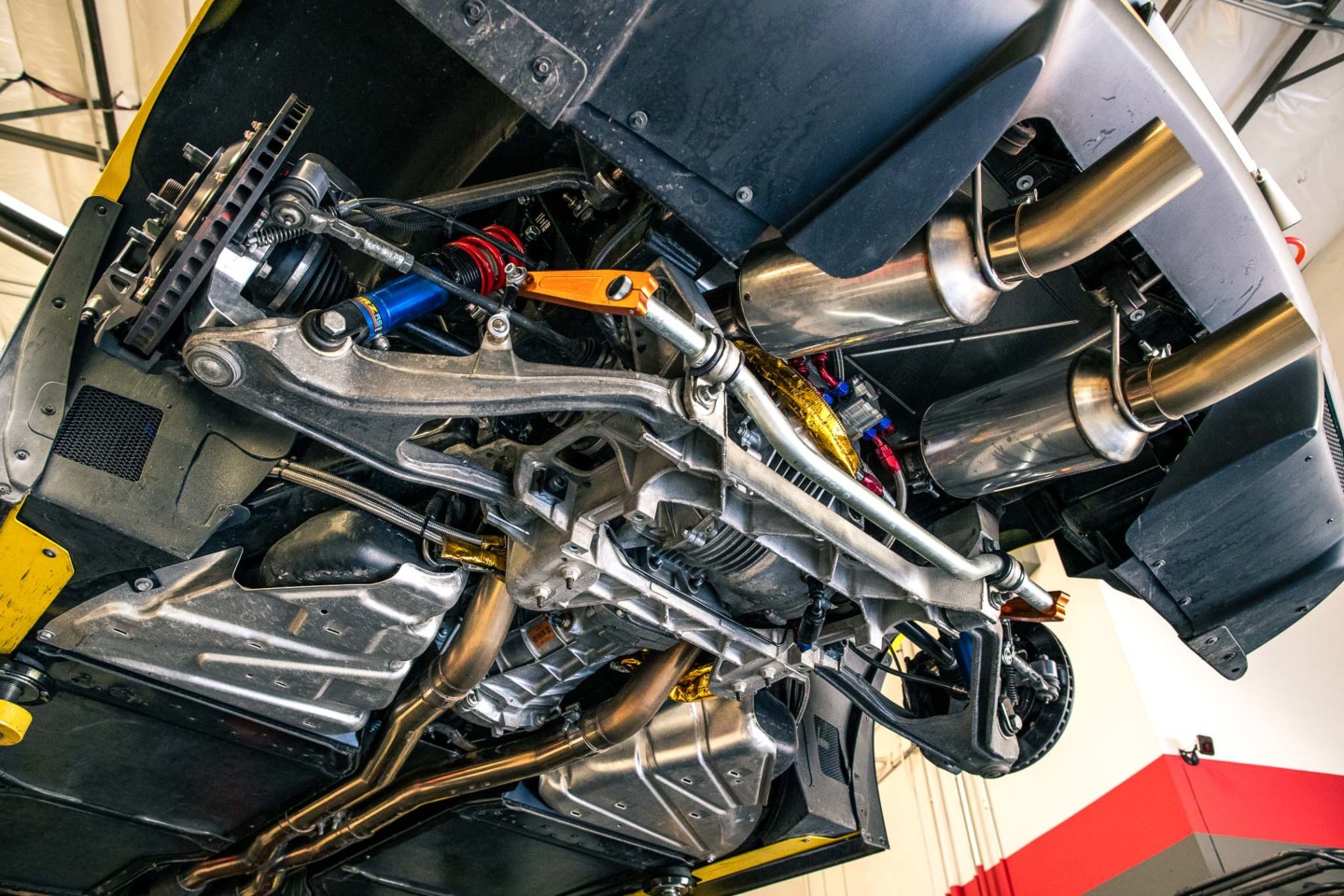
Photo credit: Trevor Ryan
Along with SKF hubs, aluminum studs, LG Motorsports drop spindles, and forged Apex VS-5RS wheels wrapped in 315 and 345-section Hoosier R7s, Matt significantly reduced the unsprung mass. Those drop spindles were needed to rectify the unfavorable changes to the suspension geometry resulting from Matt swapping the leaf springs for a proper JRZ coilover setup. Even with the stiffer spring rates and spherical bushings, the optimized geometry and reduced unsprung mass means the Corvette rides even better than it did from the factory.
Though compliant enough to drive to the track, it is at its best on a hot lap. The wall of torque makes the throttle application straightforward, and the predictability of the JRZ-based suspension gives him the confidence to push hard without taking risks. To drive that quickly while looking like one’s cruising, the car must be sorted just about perfectly.
Commanding Air Around A Soft Shape
That sophisticated ride is part of the Corvette’s approachable character. The other half is due to its aerodynamic stability. The aero additions are short and straightforward, but they make a considerable difference.
“We’ve read all the discussions online about the effectiveness of chassis-mounted aero, but as we were trying to build this car almost entirely with bolt-on parts, they were what made sense to us. We’ve discovered they work extremely well,” Matt explains.
At the back of the car, the LG Motorsports wing is mounted to the rear crash bar. At the front, the LG Motorsports splitter is attached to a cradle that mounts to the frame. These two additions keep the car looking simple and provide a predictable handling balance at higher speeds. However, they’re not simple bolt-ons—at least the splitter isn’t.
Among the cognoscenti, the Z06 is referred to as a bottom-feeder. This might sound like an insult, but it’s just a reference to how it manages the air entering from underneath the front bumper. In stock configuration, there’s an air dam mounted behind the radiator and perpendicular to the road’s surface. This meets the air head-on and forces air into the engine bay at a 90-degree angle.
Though this imperfect design works effectively enough at street speeds, an unfortunate side effect is that it leaves the air with nowhere to escape. Drivers taking their Z06 to the track for the first time might be startled to see their car’s hood bulging from the unrelieved air pressure concentrating underneath.
To add the splitter, one must remove the air dam and seal off the car’s underside all the way back to where the front subframe begins. To keep the engine cool, they must also draw air from the front inlet. Bearing in mind that the extra horsepower generates more heat, Matt made sure to give the air somewhere to escape. A vented hood helps draw some of that heat from the engine bay, and the GSpeed laydown-radiator takes advantage of airflow from the front inlet.
Finishing Touches
Even with the powertrain running cool in any condition, there was still one way he could ruin an expensive LS7. Big slicks generate a good amount of grip, and the LS7 requires a little assistance to stay lubricated under these loads. Wincing slightly as he entered his credit card information, Matt bought himself a Dailey Engineering Stage 4.5 dry sump system. This pricey upgrade puts a mechanical gear in the oil pan and increases the oil volume with a larger sump. Along with a set of Setrab oil coolers mounted in the factory fog light housings, the LS7’s oiling concerns were all addressed.
If the mostly factory bodywork and full interior didn’t make it clear, Matt strove for the OEM-plus feel with this particular build. Though the fire suppression system isn’t visible, it’s still there. A small tank is located at the rear, the lines painstakingly work their way through the cabin underneath factory trim, and they exit through subtle outlets.
Aside from a pair of Recaro Pole Position seats and an OMP Super Quadro wheel, there’s very little in the cabin that would lead you to believe it’s as capable as it is. A glance from afar through a pair of untrained eyes wouldn’t suggest anything special about this Corvette. But a closer look from an appreciative tuner would reveal the extent to which Matt tried to keep this Z06 civil and sexy enough to be a respectable street car while still being a seriously fast track toy.




